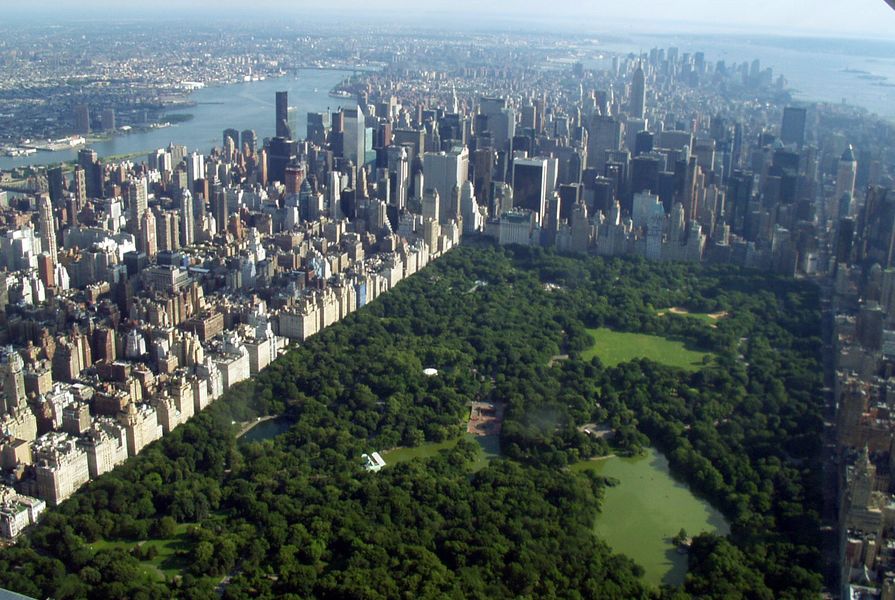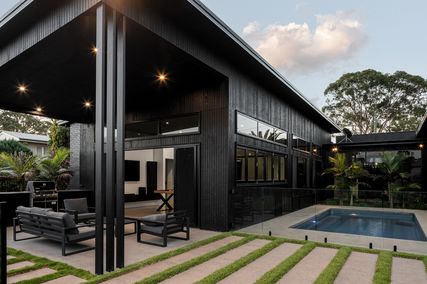Spirit of Place, the inaugural Regional Architecture Conference will look into the practice of place-responsive architecture. It’s a big issue, particularly in Australia where the economic divisions and physical distances between urban and regional centres are so vast. Hosted by the Australian Institute of Architects Queensland Chapter, the conference brings together guest speakers from around Australia and the world to examine these issues through a variety of lenses from current practice and historical enquiry. The full program and speakers list can be seen at the conference website. Five architects speaking at the conference responded to the same three questions, giving some fascinating views on regionalism and spirited places to ponder.
Stuart Harrison (Victoria)

Salk Institute, San Diego, by Louis Kahn.
Image: Courtesy Eiko R. Thielemann
Q: In terms of Spirit of Place – what do you think is the most powerful piece of architecture / urban design / natural landscape?
SH: Architecturally, Louis Kahn’s Salk Institute (San Diego) comes to mind as a kind of defining image and experience of place; but beauty and harmony only gets us some of the way to successful places. Since Utzon’s masterpiece of The Sydney Opera House, two other great modern public places have emerged in Australia – the State Library of Queensland and Federation Square in Melbourne. It is however parks that are some of the most powerful urban places we make, and it’s hard to get past the sprawling ones of London and New York’s defining Central Park, lungs for these great cities, the act of sharing space for the public good.
Q: With the world focused on the metropolis – urban density and renewal to accommodate growth – what do regional architects have to offer the culture of design and the future of cities?
SH: Insights that come through an understanding of particularities, the specific qualities of a place, is as useful in cities as it is regional areas. For too long, suburban facilities and place-making has been too generic, too place-less. If the understanding that helps define regional work can be used in the densification of cities and growing regional centres, than we have a chance of making these places good for all.
Q: What will your talk at the Spirit of Place conference focus on?
SH: How we might understand place today – is it still purely physical? Is design always the answer? I will look at how notions of place are developing in a brave new digital and media world, and how we as a profession ‘under pressure’ might play a role.
Robert Morris-Nunn (Tasmania)

Kutikina Cave on Tasmania’s Franklin River.
Image: Courtesy Robert Morris-Nunn
Q: In terms of Spirit of Place – what do you think is the most powerful piece of architecture / urban design / natural landscape?
Robert Morris-Nunn: The possibilities are endless, but it comes down to spaces redolent with meaning, so intense it is almost oppressive. These “do it” for me:
Natural Landscape: Kutikina, the cave on Tasmania’s Franklin River where signs of habitation by aborigines 35,000 years ago have been discovered. This discovery was one of the factors that saved the Franklin River from being flooded, and the cave is only reached by several days white-water rafting down the still wild river, shooting the rapids, experiencing the majesty of the Tasmanian wilderness. The pristine landscape surrounding the cave, the ancient human history tied with forests from Gondwanaland, the heroic struggles to protect it – all this makes this landscape truly unique for me.
Urban design: Again a historic series of manmade spaces, redolent this time with human tragedy: Port Arthur and the Tasman Peninsula, especially the ancient mine at Saltwater River, where convicts were housed and worked underground till they dropped, literally the absolute pits. When you then add the recent massacre to the history of sadness, it is amazing that the human spirit is still able to soar, but thankfully it does…
Architecture: Within my own work, a project which is most redolent with meaning for me would have to be the IXL Redevelopment. Taking seven battered historic warehouses and breathing new life into them as a quality hotel and new glass roofed urban space has been a real joy, and all the more because it was the first significant Heritage redevelopment that totally changed the perception of tourism in urban Tasmania. It has engaged positively with so many people from all walks of life, both local and international alike. The hotel still is virtually always completely full, and people sit round and weave their own tales, more myths than real, but it is all very life affirming.
Architecture of the great spaces: Hagia Sophia stands out for me; the sheer audacity of its structural engineering for its age, the absolutely magnificent soaring nature of its grand uplifting interior, and the many layers of the various tides of history that have washed over it and are still visible. It is truly humbling.
Q: With the world focused on the metropolis – urban density and renewal to accommodate growth – what do regional architects have to offer the culture of design and the future of cities?
RM-N: For me, it is showing how to be very much in tune with the stories and folklore of the region/place, and always respect them and try to add and enrich them. If these intangibles can be preserved, and added to in a way that does not lessen the intrinsic value of the original qualities of that particular place, then regional architecture can be very important indeed. It’s about creating evolutionary – not revolutionary – architecture.
Q: What will your talk at the Spirit of Place conference focus on?
RM-N: I’ll be talking about my reading of these stories describing the “spirit of the place” that is Hobart/Tasmania, and in turn building them into the new architecture of today – that is only a thin veneer on what has gone before.
Adrian Iredale (Western Australia)

Western Desert remote housing by Iredale Pedersen Hook.
Image: Courtesy Iredale Pedersen Hook
Q: In terms of Spirit of Place – what do you think is the most powerful piece of architecture / urban design / natural landscape?
AI: Paul Pholeros’ and Healthabitat’s ongoing design and supply of wet area facilities (and others) to Australian Indigenous communities, improving hygiene and reducing the spread of disease. The impact and benefit of these facilities can never be compared to a singular piece of architecture.
Q: With the world focused on the metropolis – urban density and renewal to accommodate growth – what do regional architects have to offer the culture of design and the future of cities?
AI: We work in a field that stretches over 3,000 linear kilometres, seven climatic zones, almost every culture in the world and over 200 languages. Our role is to observe and uncover these qualities, balancing our own experiences with the unique particularities of each specific place and to operate with respect regardless of whether it is the city or a remote community.
Q: What will your talk at the Spirit of Place conference focus on?
AI: We work on projects that are considered “extreme” – remote prisons, social housing, police stations, courthouses and aged-persons centres – but ultimately seek to engender pride, ownership and dignity for the occupants and community. This talk will focus on these sensitivities through a sequence of projects from Perth +110 kilometres (70 minutes) to Perth +3,015 kilometres (1 day 7hrs).
Kevin Mark Low (Kuala Lumpur)

Hokkaido, Japan.
Image: Cameron Williamson
Q: In terms of Spirit of Place – what do you think is the most powerful piece of architecture / urban design / natural landscape?
Kevin Mark Low: Including but certainly not limited to:
- Mangaldas cloth market, Bombay
- Three feet of untouched powder snow on a slope in Hokkaido
- Interiors of Golcondé, Pondicherry
- Downtown Kocisé, Slovakia
- White seabed under six metres of Maldivian ocean in sunlight
- Punt da Suransuns, Switzerland
- Upstream tributary of Sungai Petuang, Malaysia
Q: With the world focused on the metropolis – urban density and renewal to accommodate growth – what do regional architects have to offer the culture of design and the future of cities?
KML: I just think that every architect should be dead perceptive about exactly what they strive for and why, be it commercial, or critical work.
Q: What will your talk at the Spirit of Place conference focus on?
KML: Places and things where not a whole lot of spirit is usually found.
Alice Hampson (Queensland)

St Paul’s Anglican Church, Talwood, by Eddie Hayes.
Image: Courtesy Thom Blake
Q: In terms of Spirit of Place – what do you think is the most powerful piece of architecture / urban design / natural landscape?
Alice Hampson: St Paul’s Anglican Church, Talwood, by Brisbane architect Eddie Hayes. It was designed to be built by the only two trades in the surrounding district – the local carpenter and bricklayer, and the rest by the unskilled townsfolk.
Q: With the world focused on the metropolis – urban density and renewal to accommodate growth – what do regional architects have to offer the culture of design and the future of cities?
AH: Regional architects are acutely aware of place, materials and climate. Their work can take direct influences from sources beyond our shores and can shine independently from the big smoke and southern cities.
Q: What will your talk at the Spirit of Place conference focus on?
AH: A road-trip of 1940–60s regional architecture of Queensland.
















